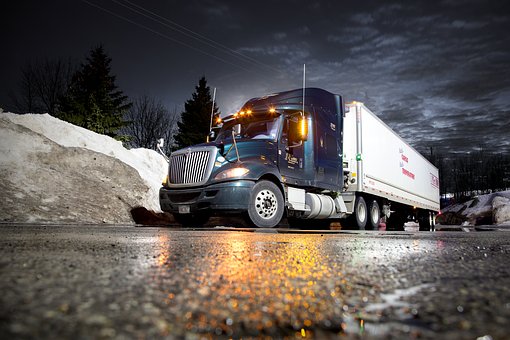Electronic logging device (ELD) mandates and FMSCA regulations have the food industry in a storm. That includes increased freight costs (in the 60% range) and major truck shortages. The problem is, unlike durable goods, many food items don’t do well waiting around to be shipped.
As with any industry disruption, though, there’s turmoil before things even out. Here’s a glimpse into the latest electronic logging device regulations and what they mean for food shipments.
E-logging devices in a nutshell
In an effort to reduce driver fatigue and trucking accidents, the new Federal Motor Carrier Safety Administration (FMCSA) regulations require truck drivers to stay within set hours of service (HOS). That means they can drive “a maximum of 11 hours after 10 consecutive hours off duty.”
And to enforce the mandate, electronic logging devices track truckers’ hours, regulating when they can — and cannot — hit the road.
This is a huge adjustment for freight carriers. And for food shipments, it’s causing shipping delays, limited lanes and skyrocketing prices.
Critical ELD mandate timeline dates
While the mandates kicked off back in 2012 with MAP-21, the timeline for implementing e-logging technology includes 3 key phases.
Phase 1: ELD Awareness and transition
In 2015, 4 years after Congress passed the initial bill, they publish the final rule. Freight carriers are given an ease-in period of voluntarily implementing ELDs into their fleets.
Phase 2: ELD Phase-In Compliance
This 2017 phase signals the final rule compliance. With the transition phase over, the logging devices are now mandatory. That’s leading to shipping delays and price hikes as the logistics companies adjust to the new regulations.
Phase 3: Full Compliance
By 2019, ELD use will be mandatory. Carriers should see the benefits of e-logging devices, such as efficiency in managing driver logs (including less paperwork), and as a back office asset for greater productivity and enhanced compliance.

So, for the food industry, phase 2 is creating the greatest challenge for getting food products into available and affordable shipping lanes.
Tech confusion
The ELD mandate requires implementing a sweeping, new technology. And that’s shaking things up. It’s forcing truckers to go from paper records to an e-log. Plus, with closely monitored hours of service (HOS), trucks are sitting idle while food shipments wait.
As with any new regulations, enforcement can also get bumpy…like the recent confusion (and infractions) with ELDs and grandfathered AOBRDs (Automatic Onboard Recording Device).
These are all factors adding to the frustration of rescheduled food loads and tight capacities.
Expect delays…for now
So, as suppliers, brokers and truckers adjust to the new regulations, there’ll be shipping delays and limited space for foods loads. Costs will increase.
But by the time the final phase goes into effect in 2019 — 2 years after the “storm” and 7 years after the mandate’s beginning — shipping lanes will hopefully regulate. They must…because with every storm, calm skies follow.
How is your company coping with the effects of the new regulations? And if you’re in logistics, what do you think are some good strategies as the industry adjusts to the ELD mandates? This is a hot topic that’s affecting a lot of people. Let us know what’s happening on your end in the comments. Please share the post on LinkedIn. Let’s get the conversation going.
Also, if you have problem ingredients you’d like to sell, we can help. Give us a call, and we’ll find the best market solution for your off-spec ingredients. Get in touch!



